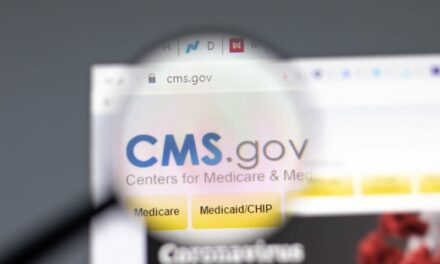This is a companion article to the feature, “Adoption of Liquid Biopsy Tests for NSCLC.”
The Cleveland Clinic included liquid biopsies on its list of the top ten medical innovations projected to affect patient care in 2017.1
The clinic is not alone in believing that blood-based cancer diagnostics are on the verge of changing patient care. A number of other oncology centers have developed and implemented liquid biopsy tests not only for lung cancer, but for breast, colorectal, gynecologic, ovarian, prostate, and skin cancers as well.2 Some of the centers, including the Dana-Farber Cancer Institute and the Mayo Clinic, have initiated clinical trials to measure the efficacy of liquid biopsy testing.3,4
Liquid biopsy testing is possible because blood samples from a cancer patient contain cell-free DNA shed from the tumor, also known as circulating tumor DNA (ctDNA). This ctDNA is discarded from tumors into the blood as a byproduct during apoptosis and necrosis, two processes linked closely to the growth and progression of a cancer.
About three dozen companies have taken up the challenge of commercializing and offering liquid biopsy products and services to the market—primarily as laboratory-developed tests. Products range from simple mutation panels to whole workflows for the isolation and analysis of ctDNA. Market revenue for liquid biopsy testing is expected to rise to $2.89 billion by 2026.5
The popular phrase ‘liquid biopsy,’ however, does not tell the whole story. The term can encompass the collection of a variety of biomarkers in many body fluids for numerous purposes. Thus, liquid biopsies offer a more comprehensive sampling technique than traditional biopsies, and have garnered interest throughout the world not only as a noninvasive cancer diagnostic, but also in applications for cardiac and neurologic disease monitoring, early detection and evaluation of drug resistance, organ transplant monitoring, and prenatal testing.1
References
- Cleveland Clinic unveils top 10 medical innovations most likely to be game changers [press release]. Cleveland: Cleveland Clinic, 2016. Available at: https://newsroom.clevelandclinic.org/2016/10/26/cleveland-clinic-unveils-top-10-medical-innovations-likley-game-changers. Accessed April 30, 2017.
- FDA-AACR: liquid biopsies in oncology drug and device development [workshop transcript, online]. Philadelphia: American Association for Cancer Research, 2016. Available at: www.aacr.org/advocacypolicy/governmentaffairs/pages/fda-aacr-liquid-biopsies-in-oncology-drug-and-device-development.aspx#.wqjrti61vuq. Accessed April 30, 2017.
- ‘Liquid biopsy’ blood test accurately detects key genetic mutations in most common form of lung cancer, study finds [press release]. Boston: Dana-Farber Cancer Institute, 2016. Available at: www.dana-farber.org/newsroom/news-releases/liquid-biopsy-blood-test-accurately-detects-key-genetic-mutation-in-most-common-form-of-ung-cancer-study-finds.aspx. Accessed April 30, 2017.
- Liquid biopsies offer hope for earlier treatment, better tracking of ovarian cancer [press release]. Rochester, Minn: Mayo Clinic News Network, 2016. Available at: http://newsnetwork.mayoclinic.org/discussion/liquid-biopsies-offer-hope-for-earlier-treatment-better-tracking-of-ovarian-cancer. Accessed April 30, 2017.
- Liquid biopsy market revenue is expected to reach US$ 2.89 bn by 2026 [online]. MedGadget. 2017. Available at: www.medgadget.com/2017/02/liquid-biopsy-market-revenue-is-expected-to-reach-us-2-89-bn-by-2026.html. Accessed April 30, 2017.




